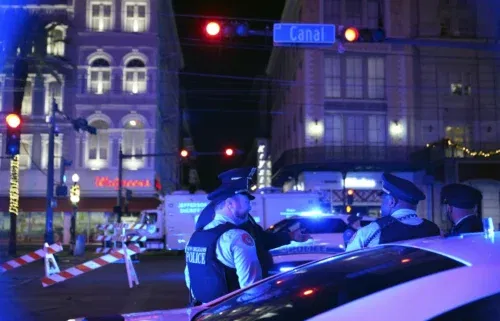Born in a typhoon: Many, including newborns, remain without electricity as Guam recovers from storm
By JENNIFER SINCO KELLEHER
Associated Press
HONOLULU (AP) — About a week after Typhoon Mawar tore through Guam as the strongest typhoon to hit the U.S. Pacific territory in over two decades, most of the island remained without electricity and the governor appealed for patience during a recovery process expected to take at least a month.
Even though Mawar caused no deaths or catastrophic destruction, officials said that as of Wednesday only 28% of power had been restored on the oppressively hot and humid island. About 44% of cell towers were functional Wednesday, and about half the water system was operational, Bob Fenton, regional administrator for the Federal Emergency Management Agency told The Associated Press via phone from Guam.
Mawar briefly made landfall as a Category 4 storm late on May 24 on the northern tip of the island of roughly 150,000 people, flipping cars, tearing off roofs and leaving trees bare.
There have been long lines for gas and officials estimate it will be four to six weeks before power is fully restored. FEMA did not yet know exactly how many homes were destroyed. High school graduations were indefinitely postponed across Guam.
Nearly 3,400 people registered for individual assistance, a number Fenton expects to rise dramatically as communication networks improve.
Fenton has seen storm-prone Guam through numerous typhoons in his 26 years working with FEMA in the Pacific islands.
“Guam has done a good job at hardening parts of their system,” since Super Typhoon Pongsona struck the island in 2002, he said.
Since then, wooden power poles have been replaced with ones made of concrete or composite material, he said. Homes are also mostly made of concrete, even though there are still less sturdy structures with tin roofs.
“Each and every day the system will improve,” Fenton said, adding that he understands how grueling even a few hours without electricity can be. “We’re here for the long haul.”
Gyuri Kim was in labor with her first baby as the typhoon lashed Guam, flooding the hospital and leaving walls shuddering.
“The building was shaking,” Kim said. “I was worried that the ceiling or the wall was gonna fall.”
After delivering her baby girl, she had to wait outside in a hallway on a recliner chair because there wasn’t a room available because of the flood damage, she told AP in text messages Saturday.
Kim’s husband came to the hospital after Grace was born, but couldn’t stay long because he had to repair their storm-damaged roof.
Conditions were also challenging for the new mom at home, where there was no electricity to cool down the muggy heat.
“We’re patiently waiting for power and water to come back,” she wrote. “Grace is doing fine! I just feel bad whenever she sweats a lot.”
Kim’s obstetrician delivered six babies, including twins, throughout the storm.
“And it was just an incredible, incredible ordeal that these women had to go through,” Dr. Thomas Shieh told AP. “Some of them were in a lot of pain and there was no (air-conditioning). It was horrible.”
While one of the twin girls was still being monitored in neonatal intensive care for breathing issues, new parents Blessy and Ramil Argana went to a hotel with the other one after leaving the hospital Sunday.
“Our house is messy. There’s debris … on our streets,” Blessy Argana said Thursday from their room. “And there’s no power and water and internet. It’s like a ghost town.”
Guam Memorial Hospital, the only hospital on the island where civilians can give birth, sustained significant flood damage but remained operational.
Guam is a crucial hub for U.S. forces in the Pacific, with about 6,800 service members assigned to the island, according to the Pentagon. Ahead of the storm, military officials evacuated personnel, dependents and employees, sent ships out to sea and moved aircraft off the island or secured them in protective hangars.
A.B. Won Pat International Airport, which also flooded, resumed regular flight operations on Monday.
Jesse Alig, mayor of the village of Piti and president of the Mayors’ Council of Guam, has been vocal about being unsatisfied with Guam officials’ planning and response.
“Yes, we’re recovering. The island is cleaning up fairly well,” he said, but more needs to be done to get resources and information to people. “I just think we didn’t plan well enough.”
In a Facebook video Wednesday, Gov. Lou Leon Guerrero said she understands his frustration. “I heard Mayor Alig,” she said, announcing that $100,000 would go to each mayor to help meet immediate needs.
“Progress has been made,” she said of seeing more lights go on and more people getting water restored.

